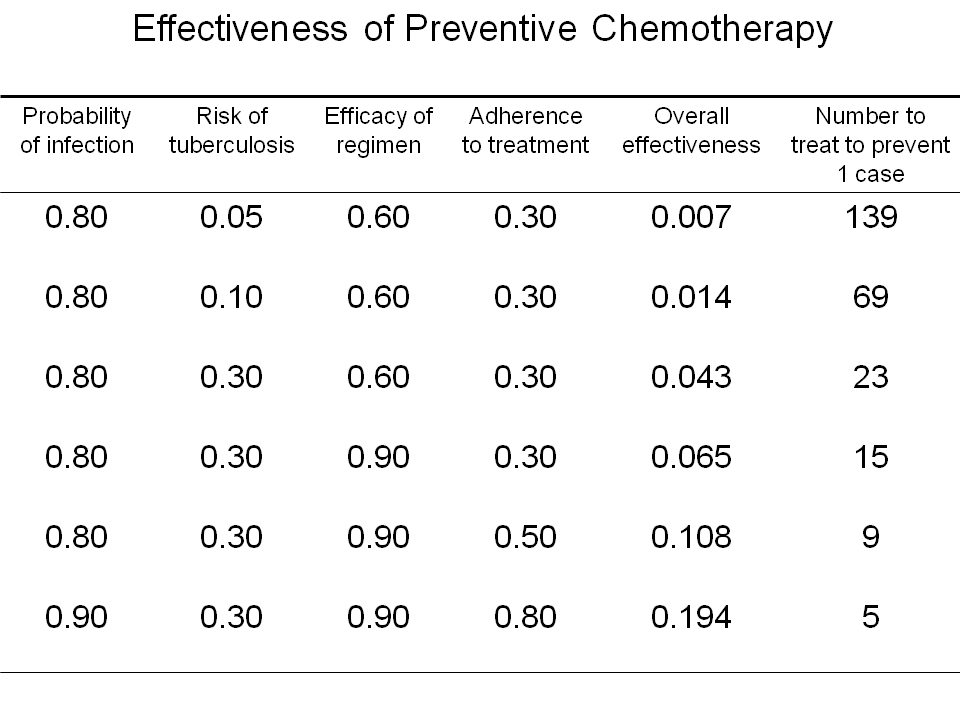 |
|
| |
|
|
| Slide |
152 |
Interventions for Tuberculosis Control and Elimination |
 |
Next |
 |
 |
Previous |
 |
First |
 |
Last |
In these examples the effectiveness in various situations is calculated. The lifetime risk of tuberculosis may vary between 5% (long-standing infection), to 10% (recent infection), and to 30% (superimposed HIV infection). The regimen efficacy depends on the duration, e.g., six versus 12 months of isoniazid. And finally adherence to a treatment regimen given for a non-symptomatic condition may also vary greatly.
The overall effectiveness is the product of these three probabilities. The number of persons required to be treated to prevent one case of tuberculosis is the reciprocal value of the effectiveness.
This theoretical example does not yet include the probability of tuberculous infection given a certain induration to the tuberculin skin test.
What is clear is that very targeted use of preventive therapy is required to improve its effectiveness. The extent to which it is used will also depend on the availability of resources and the risk-benefit considerations about the use of potentially hepatotoxic drugs. |
| |
|
Go to top
Last update:
September 29, 2010